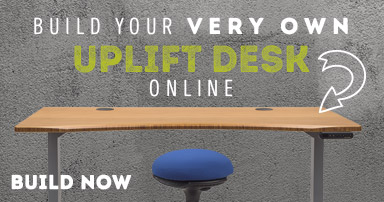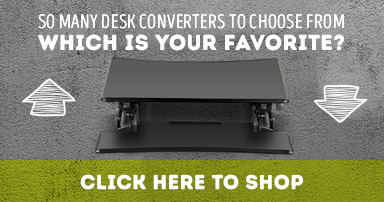Opening Up Your Office: A Guide to a More Flexible Workplace
Posted by Tyler Reinhardt on Oct 27th 2017

Consider the cubicle. Three and a half walls that act as an employee’s little work cave in which all the magic happens. The idea being that, while in their little job cave, employees will be super productive because they won’t have any distractions. The problem is that the cubicle doesn’t always work out that way and, in fact, it can hamper attempts to facilitate innovation. Businesses like innovation because it’s a way of staying on the forefront of their respective industries while differentiating themselves from competitors. So how are businesses solving this problem? Many have found the open office environment to be the best answer and for good reason. Open office environments not only open up your physical space for more efficient uses, but with fewer barriers the idea is that people will talk and collaborate more. This collaboration leads to a sharing of ideas which can often lead to that one idea that could be the company’s next "big thing".
Before rushing off to flip your office on its head though, it’s best to see what makes a transition to an open environment successful in the first place. Changing to a flexible open office doesn’t happen overnight. In fact, something of this magnitude should be carefully planned well in advance of the actual switch from cubicle hive to wide open spaces. As with any major company change, you’re going to need help. You’ll want to get support and sponsorship from leadership and not just upper management. Leaders aren’t always the highest people on the corporate ladder. You’re looking for people who have the respect of their colleagues who can influence action. This will make the transition much easier when the time comes. Once you have some support, the real planning begins. At this point, you should have at least introduced the idea of the open office concept. You probably brought it up while you were looking for supporters and if you didn’t, now’s the time. Basically, all you have to do is educate employees on the benefits and business reasons for the change.
The next step is to actually initiate a transition. Fair warning: this is going to be a process. It is by no means instant. In this step, you’ll be providing the tools and support necessary for your employees to implement the change. If done right, you’ve increased the likelihood of a successful changeover and allowed your employees to keep their sanity. Finally, when creating new guidelines for your new office layout, include your employees. Get suggestions on how to keep things running smoothly. Your employees are more than likely familiar with some of the day-to-day activities in the office that you yourself are probably not and they probably have a few ideas on ways to make things run easier. You’ll not only get some great ideas out of this bit by making your employees part of the transition process, it makes the change seem more like a team effort rather than something that’s being forced on everyone from on high.
Once you’ve laid the groundwork, the last two things to do before the move are to make sure your new policy guidelines don’t conflict with your existing policies and to make sure that all of the appropriate infrastructure is set up and ready to use. This will mitigate any chaos that may occur after the initial move and it also keeps HR happy. And who doesn’t love a happy HR department?
The actual move should go fairly smoothly if you followed the advice above but what comes next? If you have any new guidelines to go with your new open office environment, you’ll need to make sure those are delivered to your employees in as timely a manner as possible. They may need to refer to them from time to time in their new open office home. You’ll also want to keep some staff on hand who can help answer questions or solve issues as they arise. Your IT guys come to mind here but you’ll also likely need a supervisor or two who are in the know that can answer procedural questions. You may also want to do something nice for your employees to make the move feel like a positive experience. This can be something as simple as a congratulatory email or a small gift of some kind on move-in day. After all of that’s done you only need to monitor and adjust, meaning see what guidelines and layouts are working for your office and which ones aren’t. Take notes and adjust accordingly. If done right, your employees will embrace the move and your office will start innovating in no time!
Careful planning also reduces the stress on the person coordinating the change. If you’ve read this far, that person is likely you. Good luck on your move, and if in the process you find yourself in need of some ergonomic assistance we've got plenty of products to help including our Flexible Office Power and Data Link made to work with the UPLIFT Height Adjustable Standing Desk. Whether you want more information or you would like a quote, you know who to call!




